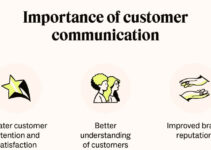(Business continuity plan) BCP communication plan is the method of communicating effectively and immediately when a disruption and crisis hit the company. It allows the company to maintain the operations and functions of the business in case of any disruptions. However, it comprises a specific procedure, guideline, and instruction that the company should follow in case of any crisis and disruption. Today, we’ll discuss the BCP communication plan; the crisis communication plan; its importance and benefits, and the key elements involved in the process.
The BCP communication plan deals with the following business processes and operations;
- Business partners
- Human resource management
- Business assets
- Accounting and payroll
- Branding and marketing
- Compliance
- Operations and business processes
The disaster recovery plan (DRP) is similar to the BCP communication plan, but the objective of DRP is to restore the company’s IT operations and infrastructure after the crisis event hits the company. In fact, DRP and crisis communication are the key areas of the business continuity plan.
Importance of BCP and Crisis Communication Plan
- 49% of US businesses and companies have a comprehensive crisis communication plan
- Makes sure that the spokesperson narrates the story and manages the situation effectively
- Regularly updating the communication plan to rebuild the brand image and reputation
Key Elements of the BCP Communication Plan
Let’s discuss some of the main elements of the BCP communication plan; they’re as follows;
Analyzing Risk Potential
While developing the continuity plan, you should not only analyze the potential factors that the company is facing. Rather you should also keep in mind the potential risk factors that would potentially jeopardize the company and its processes. However, it comprises analyzing various types of damages that the company would sustain in case of natural disaster; tornado, flood, and hurricane. The objective is to analyze various types of possible potential risks that would potentially impact the company.
Technology
When a crisis event hits the company, they should quickly move to the remote office location of the company. It requires you to have access to the remote office location so that the workers and employees can connect with the company back and forth. It could be in the form of video conferencing and teleconferencing to have a face-to-face interaction in case of disruption and crisis events. It is significant to equip workers and employees with tools and resources to have coordination and collaboration.
Power
In case any natural disaster hits the company, then it results in the form of a power outage for a particular duration of time. You should make sure to have a power backup plan; the power generator should satisfy the power needs and requirements of the company. If you are renting a building, then you should consult with the landlord to offer you a power backup in case of any disruption.
Target Audience
While developing a crisis communication plan, you should know your target audience. They could be any of the following;
- Public
- Regulators
- News media
- Customers and partners
- Frontline responders
- Crises team
- Senior management
- Employees and workers and their families
Crisis Communication Roles & Responsibilities
You should clearly define roles and have a pre-defined chain of command among employees to avoid any type of confusion. The reporting process should be clear and it should empower the right individuals to avoid any type of actions. While communicating during the crisis event, the CEO should act as a spokesperson for the company. You should clarify the role of social media managers, marketing managers, and PR.
- Coordinating internal and external sharing of information
- Making sure the information is accuracy through consultation
- Collecting information from professional centers, response teams, and command center
- Disseminating and coordinating the right flow of information in case of any incidence and disruption
Messaging
Companies should develop a comprehensive message relevant to the specific event and crisis incident, and it should meet the public demands and requirements. It is significant to update the messages with the new input and information regulation. You could employ multiple media channels; external wire services, corporate websites, and social media platforms.
Workflow Automation
In order to keep up with the flow of crisis communication, you could employ multiple software, social media sharing, and managing the crisis event information. Automation and workflow processes streamline various communication functions and processes; it allows you to quickly respond to a crisis event.
Data Protection
You should make sure that the critical data processes and functions keep running and operating efficiently and smoothly in case of any crisis and disruption. It is significant to back up all the sensitive data and information over the cloud like Google Drive or Dropbox.
Conclusion: BCP Communication Plan | Crisis Communication Plan
After an in-depth study of the BCP communication plan; we have realized that a crisis communication plan is highly significant for businesses and companies. If you are learning about a business continuity crisis communication plan; then you should keep in mind the abovementioned elements and factors.
Ahsan is an accomplished researcher and has a deep insight in worldly life affairs. He goes Live 3 days a week on various social media platforms. Other than research writing, he’s a very interesting person.


